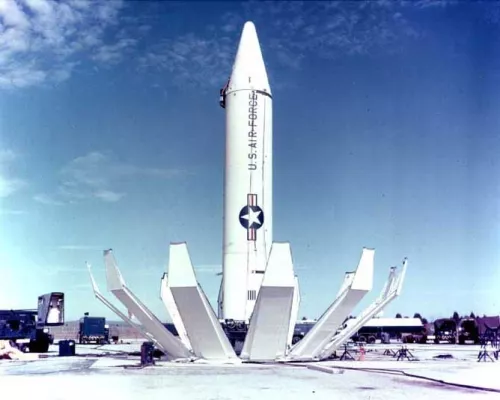Documents on the history of nuclear proliferation, the arms race, and disarmament efforts. See also the related collections in the Nuclear Proliferation International History Project. (Image, US Jupiter intermediate-range ballistic missile, US Army)

Documents on the history of nuclear proliferation, the arms race, and disarmament efforts. See also the related collections in the Nuclear Proliferation International History Project. (Image, US Jupiter intermediate-range ballistic missile, US Army)
